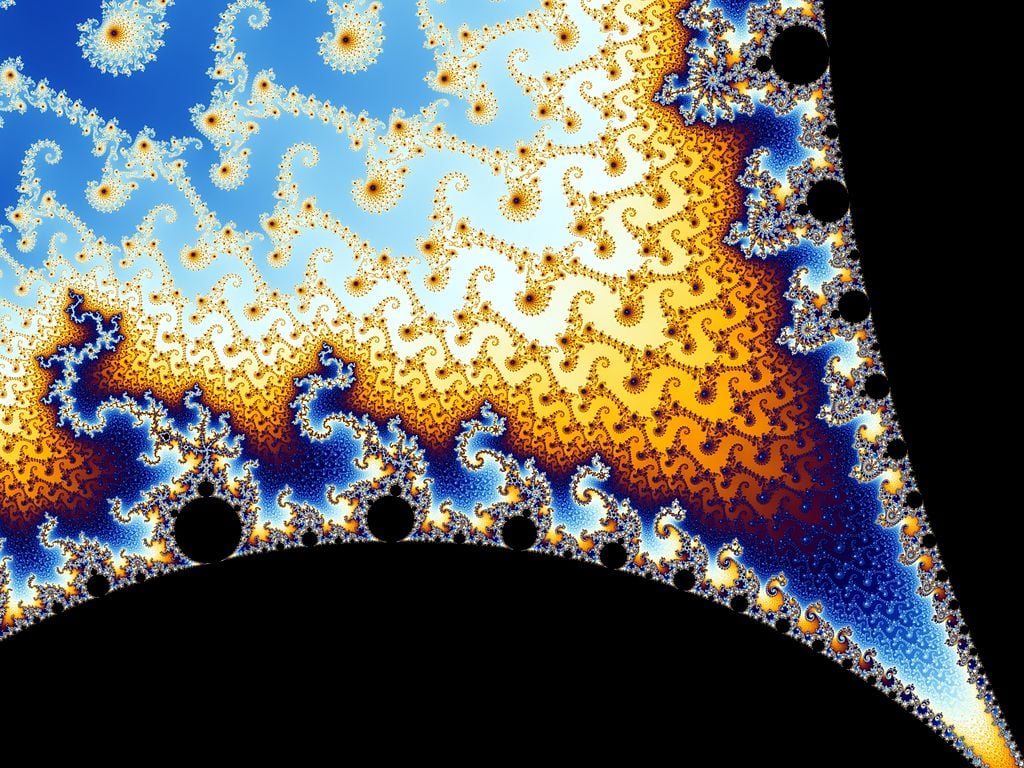Mandelbrot and Fractals: Different Ways of Perceiving Space
The universe resembles itself, and mathematics can give us a glimpse of this self-similarity.
Mathematics has always placed a greater emphasis on algebra, a “purer” version of itself, one that is more rational at least. Perhaps like in philosophy, the use of a large number knotted concepts in a multi idiomatic sentence structure reflects a deeper analysis, a greater purity or an intellectual cleanse —which we know is not necessarily always the case. ‘The intellectual impostures’ that Sokal and Bricmont criticised, in an effort to prove that there are times when complex expressions and concepts only work against a text, they drain the key arguments from any sense of depth. Whether we believe they are right or not, their book actually lacks a useful argument to support their theory, and additionally it shows a complete misunderstanding and poor knowledge of the authors and theories it criticizes.

The field of mathematics was undergoing a similar situation when Benoît Mandelbrot (1924-2010) and his fractals appeared on the scene. At the time, Euclidian geometry was widely favoured, naturalising it, forcing all objects on Earth to correspond with it. One of his most famous phrases is: ‘Clouds are not spheres, mountains are not cones, coastlines are not circles, and bark is not smooth, nor does lightning travel in a straight line,’ (Fractal Geometry of Nature, 1982). In this sense, this Polish innovator hands us a vision, that is, well, more visual of real, existing forms than merely mathematical ones.
Fractal geometry, the root of the word comes from fractus Latin for broken, fractured, is characterised by a more abstract take on dimension, unlike conventional geometry. Ultimately, what Mandelbrot does, is create an installation, which the awareness of our perception of the world and its forms is visually shattered. He changes the way in which we see reality, establishing an unprecedented new perspective. In other words: by forcing us into abstraction, he brings us closer. His contributions become a new epistemology on vision, which also questions the value we give a certain branch or another within a single discipline

Since then, fractals have been a tool that has been used graphically represent huge amounts of information over time (the movement of meteorological phenomena, the medium level of an area’s crops, additionally it is of the utmost importance in terms of understanding electronic formats). The principle behind Mandelbrot’s self-similarity, which proposes a condition where, on different scales, the individual pieces retain the same overall proportions, is also a tool that enables a new perception of the universe, since it can be contained, in its entirety, within a single speck of dust.
For further reading on the Mandelbrot set, follow this link.
Related Articles
7 Recommendations for Organizing Your Library
For the true bibliophile, few things are more important than finding a book from within your library.
Red tea, the best antioxidant beverage on earth
Red tea is considered to be the most unusual of teas because it implies a consistently different preparation process. ––It is believed that its finding came upon surprisingly when traditional green
A brief and fascinating tour of the world's sands
To see a World in a Grain of Sand And a Heaven in a Wild Flower, Hold Infinity in the palm of your hand And Eternity in an hour. - William Blake What are we standing on? The ground beneath our feet
Strengthen your memory with rosemary oil
For thousands of years rosemary oil has been traditionally admired and used due to its many properties. In the Roman culture, for example, it was used for several purposes, among them cleansing, as
Literature as a Tool to Build Realities
Alain de Botton argues that great writers are like lenses through which we can see an infinite array of possibilities.
Luis Buñuel’s Perfect Dry Martini
The drums of Calanda accompanied Luis Buñuel throughout his life. In his invaluable memoirs, published under the Buñuel-esque title, My Last Sigh, an entire chapter is dedicated to describing a
A Brief Manual of Skepticism, Courtesy of Carl Sagan
Whether or not you’re dedicated to science, these tips to identify fallacies apply to any form of rigorous thinking.
How to Evolve from Sadness
Rainer Maria Rilke explored the possible transformations that sadness can trigger in human beings.
Alan Watts, A Discreet And Charming Philosopher Of The Spirit
British thinker Alan Watts was one of the most accessible and entertaining Western interpreters of Oriental philosophy there have been.
The Science Of Orgasms
When it comes to orgasms, it’s hard not to fall for marketing gimmicks. Pleasure sells, but, above all, orgasms are actually a singular phenomenon, an intense and pleasurable response to physical stimulation.










